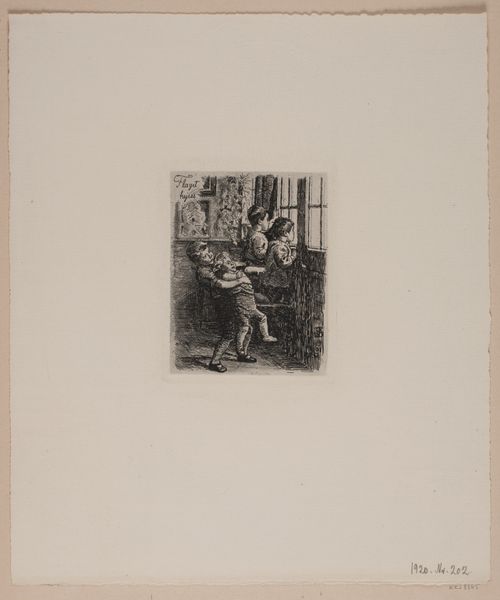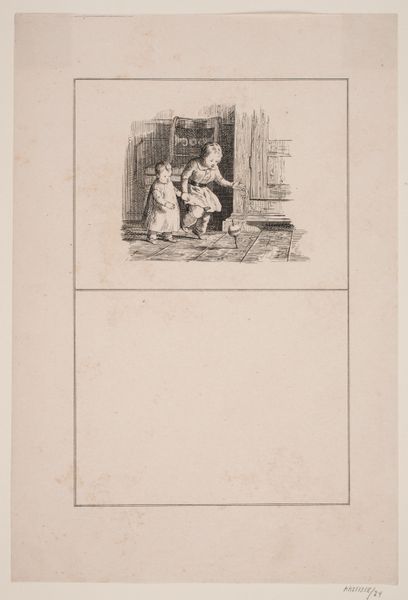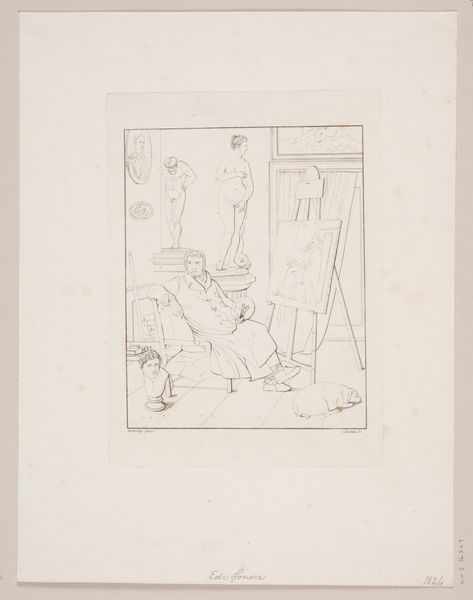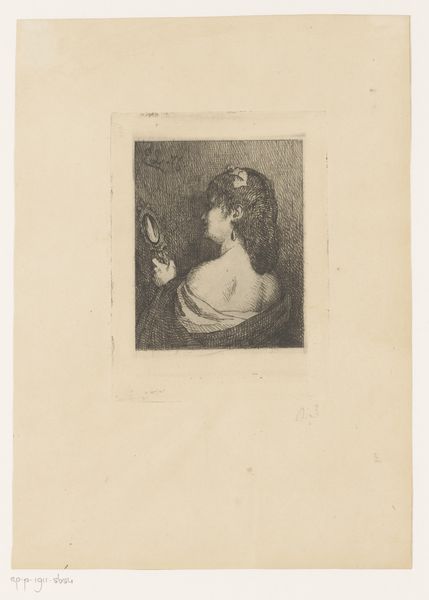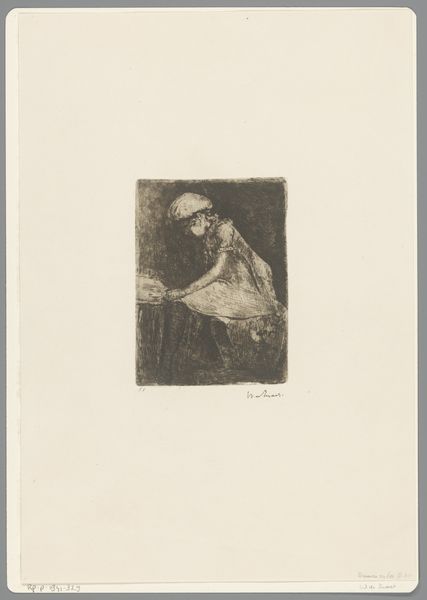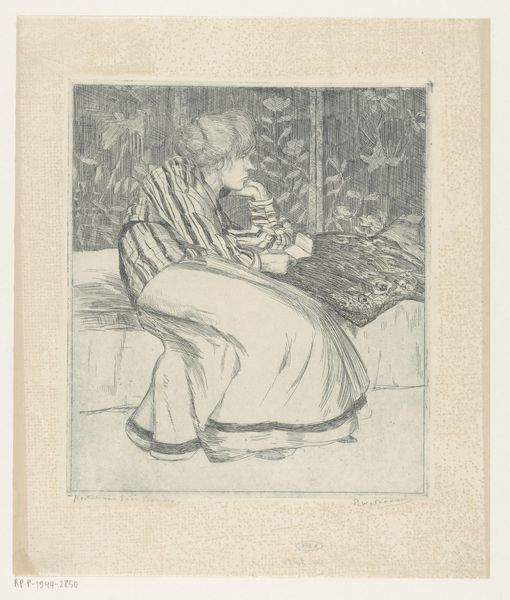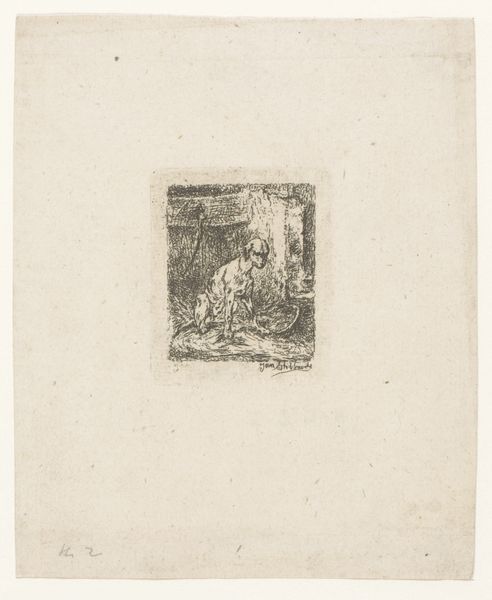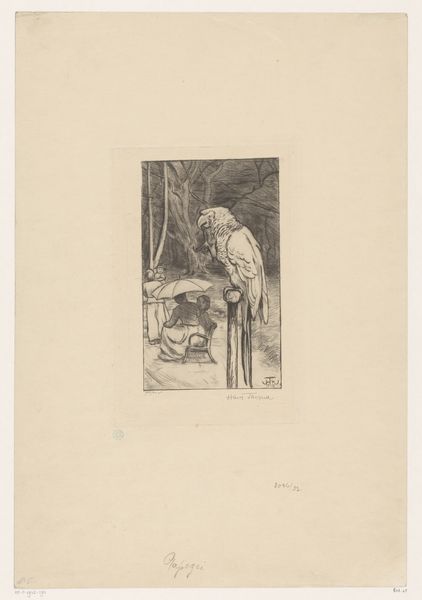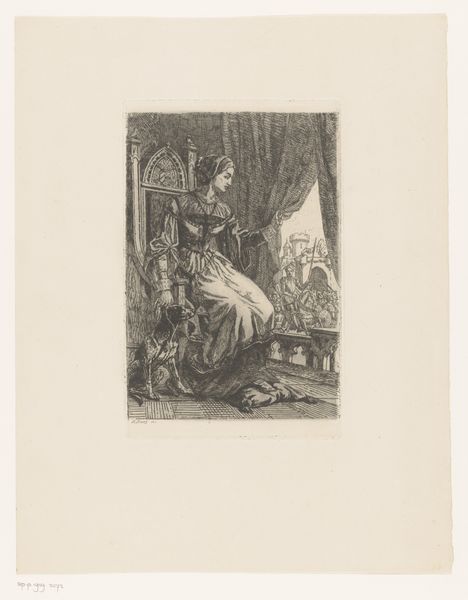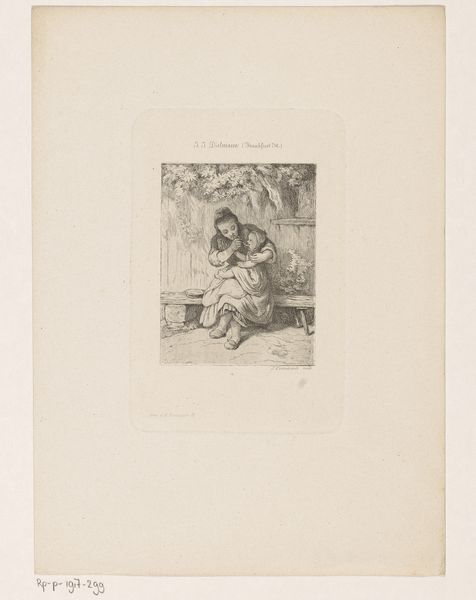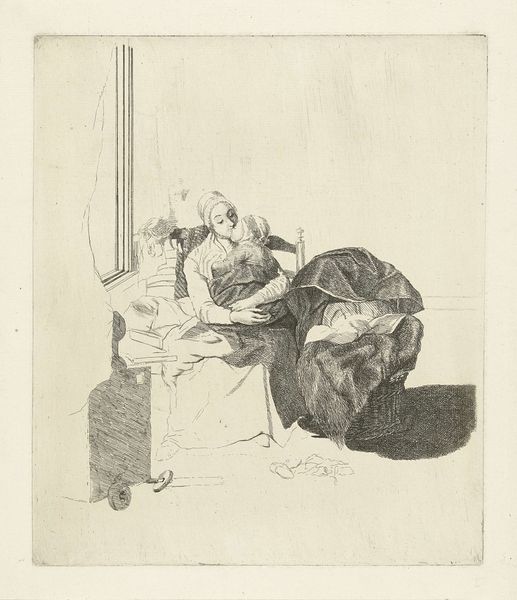
drawing, print, etching, paper, ink
#
portrait
#
drawing
#
narrative-art
# print
#
impressionism
#
etching
#
figuration
#
paper
#
ink
#
genre-painting
Dimensions: 119 × 79 mm (image/plate); 304 × 219 mm (sheet)
Copyright: Public Domain
Curator: Ah, I find this small piece incredibly charming! Edgar Degas created it using etching and ink on paper sometime between 1879 and 1880. It’s called "The Little Dressing Room" and now resides at The Art Institute of Chicago. Editor: It’s interesting. Stark even, for such a mundane title. The somber palette of blacks and greys evokes a certain quiet melancholy, doesn't it? What draws the eye first, I wonder? Curator: For me, it’s the intimacy! A private scene, a glimpse into a woman’s ritual—but seen from this remove. It feels like overhearing a secret. The casual placement of the cats heightens the sense of private theater, don’t you think? Editor: Certainly, those creatures amplify the everyday atmosphere and a sense of spontaneity that is palpable despite its obvious construction, not just transcription. If you examine how Degas organizes the plane, a clear division arises; an area behind the sitter rendered via vertical mark-making while the bottom quadrant contains horizontal strokes to differentiate surface. Curator: Degas and surface…he loved rendering movement and texture! Even here, in this modest etching. The very subject feels textured, too, like the moment just before the dancer fully commits, she hasn't sprung into performance, we don't know if she is an elegant swan, a graceful dove, it just hangs! Editor: His break with classical composition is, of course, essential. A work is never ‘whole’ within the frame but cropped for viewing to reveal a potentially infinite continuation that remains hidden, which makes interpretation so vital. Do we infer what goes beyond that open area? Curator: True! He was like a photographer snapping candid shots. Ordinary life became his tableau. His artistic choice is his commentary: capturing these informal glimpses rather than staged magnificence... Editor: In viewing Degas’ compositional arrangement and attention to surface detail as an intellectual enterprise itself. Rather than relying on conventional storytelling we may infer his philosophical contribution to representation itself, which then demands more of us as the viewers... Curator: Perhaps... I'm swayed more by the sense of quietude I get with its tender everyday narrative. Regardless, this intimate view into the dressing room of a performer shows not a constructed fantasy, but a quiet space where art imitates life! Editor: Fair point! The piece allows both approaches to meet without reducing meaning into any one category, which adds another layer to understanding this unassuming print.
Comments
No comments
Be the first to comment and join the conversation on the ultimate creative platform.
